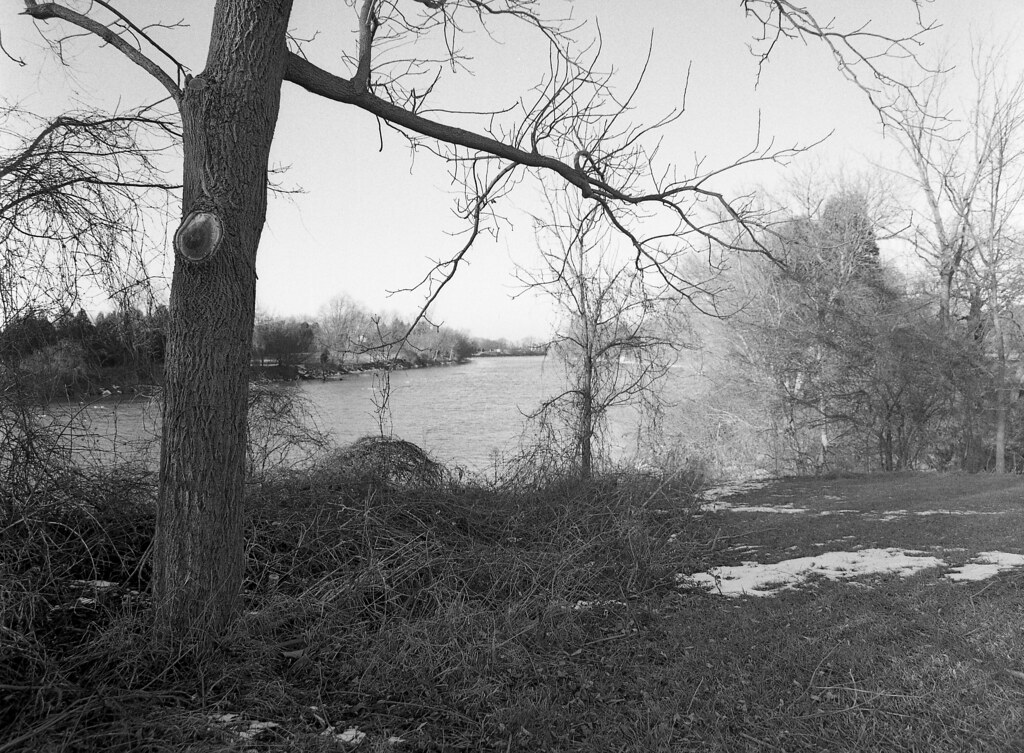The outlook for General Henry Procter in the west was grim at best, hopeless at the worst. On September 10th, 1813 Commodore Oliver Hazard Perry had managed to take on the British Royal Navy Squadron on Lake Erie and capture all the ships intact, finally wresting control of Lake Erie from the mighty Royal Navy, this left the door wide open for a full out invasion of Upper Canada in the West. We have met the enemy and they are ours, Hazard penned in a dispatch to General William Henry Harrison who was waiting in the south. Harrison took this as an open invitation. Procter had failed to keep Harrison’s army at bay by engaging him in May at Fort Meigs, and again at Meigs in June, and Fort Stephenson in August. With his supply line from the lake effectively cut off he faced the growing threat of starvation. He had already begun the preparation for a full out retreat before the American victory on Lake Erie. The Shawnee chief Tecumseh was less than impressed at the notion of retreat calling Procter a fat animal that tucks its tail between its legs and runs when attacked.
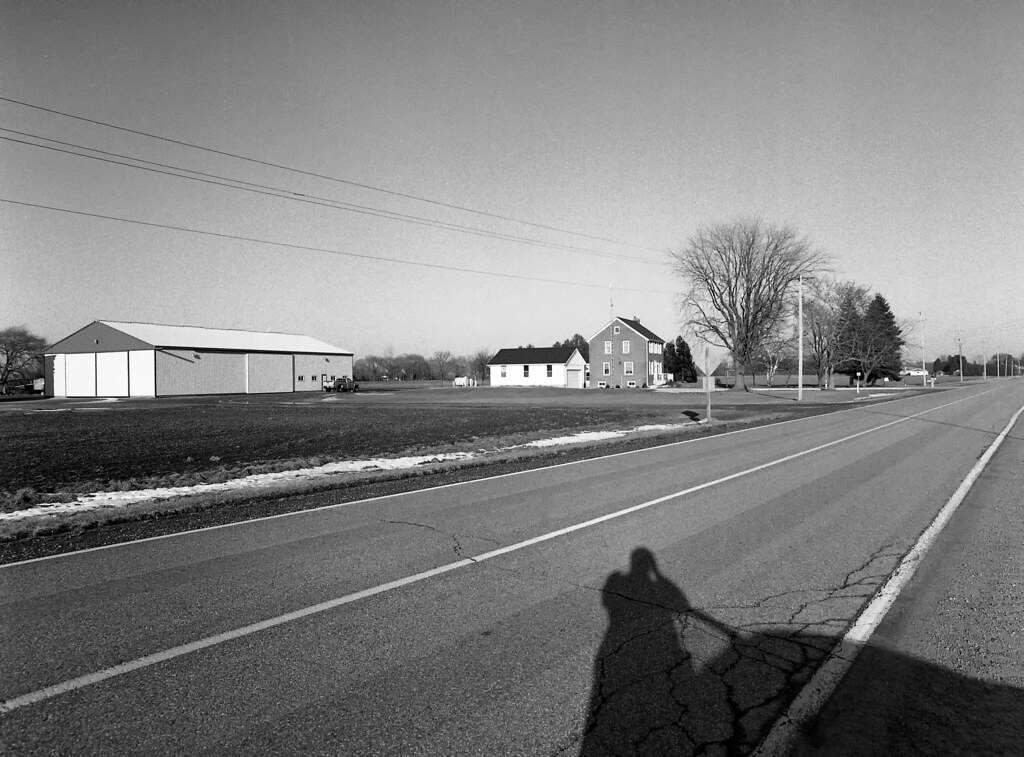
A farm that the American column camped at during their march to catch up with Procter’s column.
Harrison began marching north in September, using Perry’s Squadron as transports quickly rolled over British forces in Michigan territory and liberating Fort Detroit. Procter departed from Fort Amhurstburg on the 27th of September after destroying the Navy Yard and the fort, destroying any supplies that could not be carried. 900 troops of the 41st regiment and 500 warriors under a reluctant Tecumseh set out for Burlington Heights. Much of the supplies were sent ahead on bateaux along the River Thames. On half rations and uninspired leadership of Procter, the troops were quickly demoralized, and the officers began to question Procter’s leadership ability. The general was sloppy, leaving roads unobstructed and bridges intact as they worked their way east. Procter himself was absent for much of the retreat, choosing to stay close to his wife and baggage leaving command to his second, Colonel Augustus Warburton, who refused to question Procter’s commands despite urgings from the other subordinate officers. Harrison instead of pushing a pursuit chose instead to secure Amhurstburg and Sandwhich first before leading the column against the British force on the retreat, finally departing on the 2nd of October at the lead of near 3,000 troops from the 27th US Infantry and a large number of Kentucky militia both mounted and infantry troops.
Procter promised to stand and fight to the natives in order to appeal to their spoiling for a fight, choosing the forks of the Thames in present day Chatham. However upon their arrival on the 4th Procter agreed that it wasn’t defensible enough and ordered the retreat to continue. By this point the Americans had managed to capture the bateaux carrying much of the British supplies, and were closing in. A group of warriors stayed behind at the forks, destroying the bridge over McGregor’s Creek and engaging the forward guard of the American column, killing three and wounding six others. However their actions did little to slow Harrison’s column and they returned to the main body of British and Native troops.
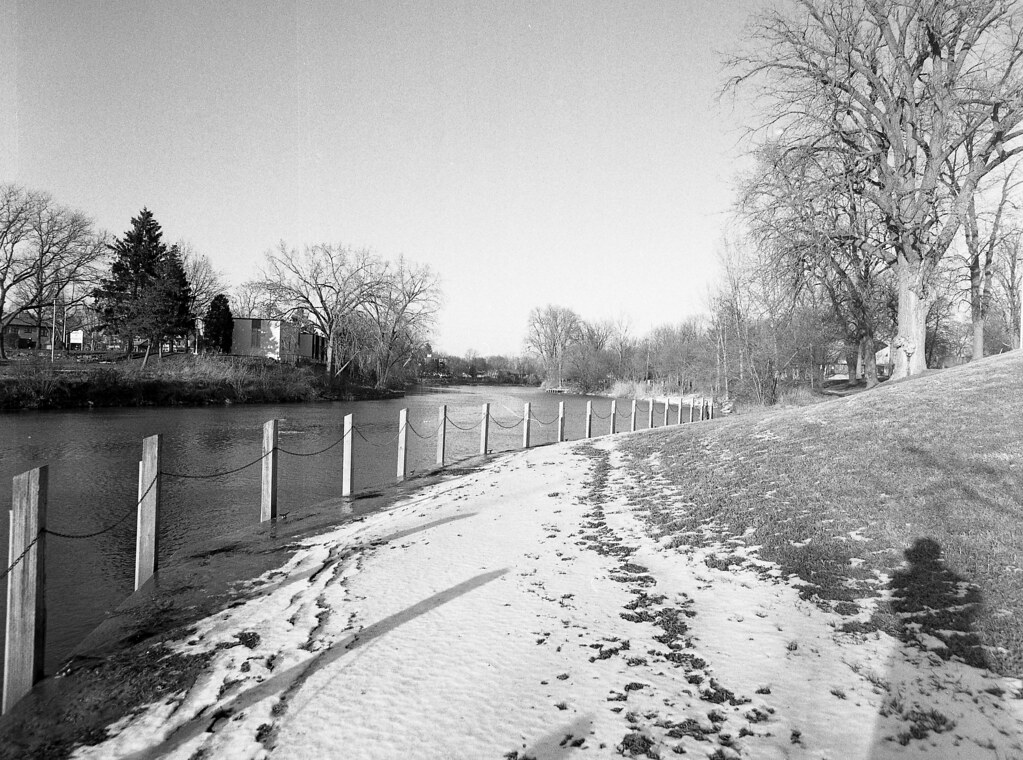
The Forks of the Thames as they are today, part of Tecumseh Park in downtown Chatham
On the morning of the 5th Procter ordered another half-mile retreat east, the tired and demoralized British troops left their half-cooked breakfast to follow their orders, it was here that Procter would make his stand, the plan was to force Harrison off the road with fire from his single six-pound gun and force his opposite to fight against the river. However he lacked the ammunition for the gun, it had been on the bateaux which had been captured. Procter also did not order the construction of field fortifications to provide cover for his men. The British troops formed a rough line of battle to stand against Harrison’s army, Tecumseh’s warriors took to the right flank of the regulars hiding themselves in a swamp. The Shawnee chief himself rode down to the line, shaking the hand of each man before joining his warriors. Harrison ordered Kentucky mounted troops to charge the British line, hoping it would break them. The troops under Lieutenant Colonel James Johnson (brother of Colonel Richard Johnson) charged the British line. The tired and beaten troops managed to fire a single raged volley into the charge, before 250 troops including General Procter ran for their lives, leaving close to 600 British troops left to surrender. Tecumseh and his warriors would not give up so quickly, giving flanking fire to the American troops, Harrison ordered Colonel Richard Johnson to take the remaining mounted militia to engage them. Their initial charge was forced back by native musket fire, Johnson himself being hit several times. Being bogged down in the swamp they went hand-to-hand with the natives. The skirmish was brief and bloody, Tecumseh himself killed (historians are unsure who killed the chief, the two that are agreed upon as being the possible man is Colonel Johnson or William Whitly), Wyandot chief Roundhead was also killed in the action. The death was catastrophic to the natives, and facing the full force of Harrison’s army retreated in disarray. American troops would continue to persue, burning the native settlement of Moraviantown, populated by Christian natives who had not participated in the war at all.
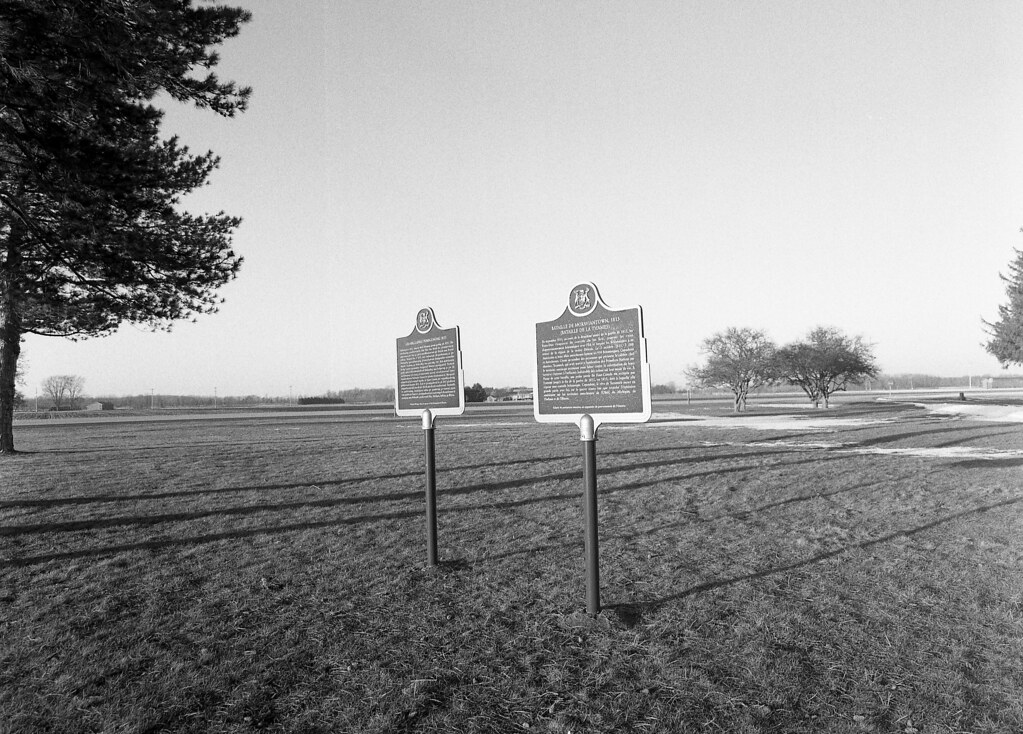
Two historic markers sit at the battlefield today, one has English and French, the other written in the native tongue that Tecumseh would’ve spoken.
While Procter eventually rallied the remaining troops at the Grand River and would eventually make it back to Burlington Heights, the consequences of his actions would be felt for the rest of the war. The native confederacy fell apart, and many tribes pulled away from the fighting, leaving only the British Regulars and local militias to stand and fight. The Americans had regained all of the Northwest, however never took advantage of it, constructing Fort Malden on the sight of the old Fort Amhurstburg, but never sent out more than raiding parties into the western part of Upper Canada. The British never attempted to take back the territory until after the war was done. The west remained quiet for the remainder of the war, save for small skirmishes in 1814. Harrison was declared a national hero, and his popularity sent him all the way to the presidency. Colonel Richard Johnson would promote the fact that he was the one that killed Tecumseh which saw him elected to the role of Vice President under Martin Van Buren. Procter’s fate however was not as prestigious, he was brought before a court martial, and charged with negligence and improper conduct. Suspended of Rank and pay for six month the charge effectively ending his military career.
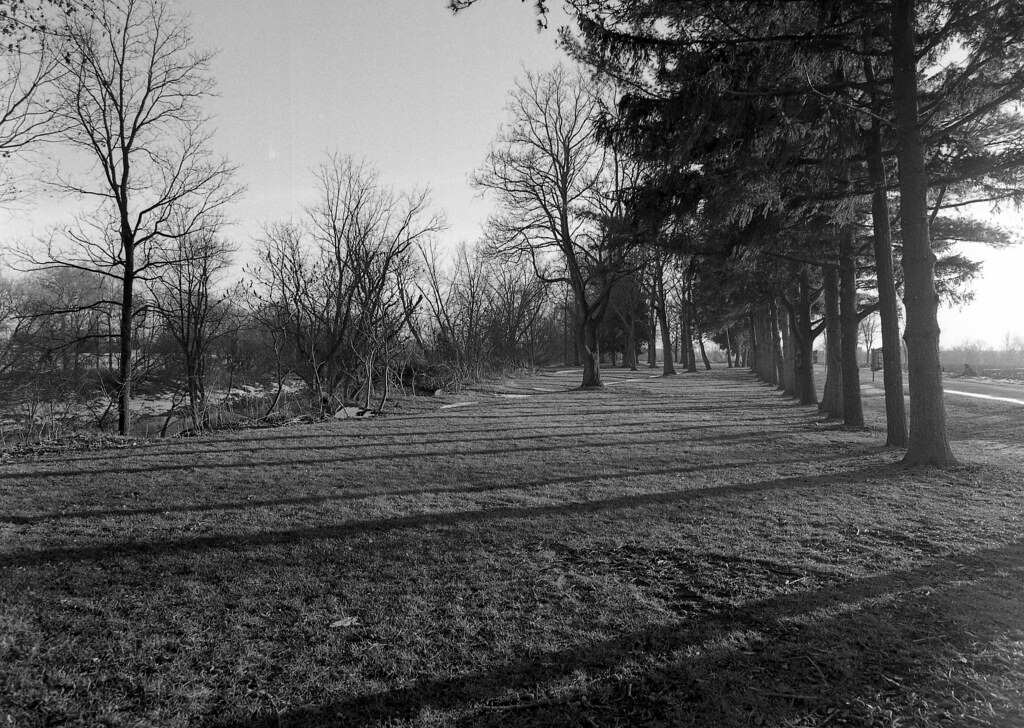
The battlefield as it sits today is mostly farmers fields, however in October of last year it was filled with people and reenactors to commemorate the 200th anniversary of the battle to the day.
The defeat of the British at the Thames had consequences that stretch well into today, the members of Canada’s native community continue to be marginalized by the government, their land reduced to mere reserves, many in poor condition. The plight of the American natives was far worse being forces well off their homelands by Federal troops through the rest of the 19th century. I don’t often get political in these posts, but this is one negative result of the war of 1812, and brings up the question, what would have happened if Brock and Tecumseh had survived the war? Would we have seen a free native confederacy independent of rule by the whites? Or would it have just delayed the inevitable expulsion?
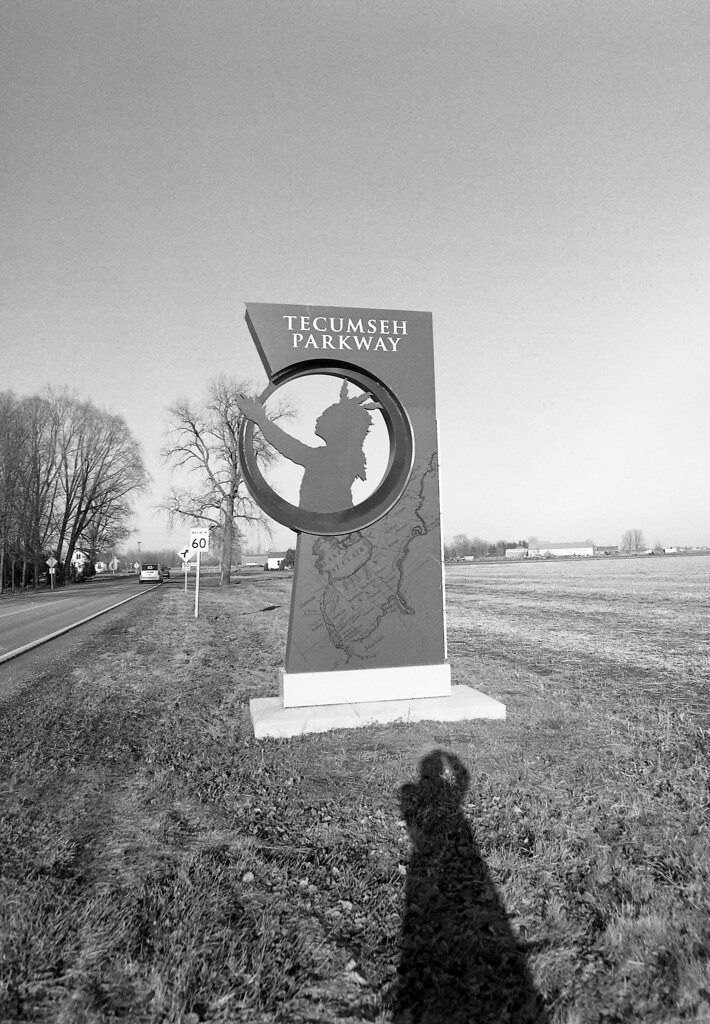
Marking the entrance to the Tecumseh Parkway
You can still see the battlefield today, located on old Highway 2 just outside of Chatham. Two historic plaques mark the site, one in English and French, the second written in the language of Tecumseh. There is also a memorial to the Shawnee chief. A little further up Highway 2 is the Fairfield museum that sits on the former site of the Moraviantown settlement. Moraviantown was rebuild on the opposing side of the River Thames. Also if you have a free afternoon, the local historical societies have banded together and setup the Tecumseh parkway which traces the historical route of the retreat along the river with stops along the way important to the battle. This past October I had the honour of participating in a reenactment of the Battle of the Thames, one of the joys of being an 1812 reenactor is that is gives me some insight into what actually happened during these engagements, and while we aren’t really British soldiers we do seek to portray them as best we can, and to honour those men (and women) who actually fought and died on these fields of battle 200 years.
Photos: Pentax 645 – SMC Pentax A 645 35mm 1:3.5 – Kodak Tri-X 400 (400TX) @ ASA-200 – HC-110 Dil. E 6:30 @ 20C
Sources:
Guidebook to the Historic Sites of the War of 1812 Second Edition by Gilbert Collins – 2006 The Dundurn Group Publishers
Web: www.eighteentwelve.ca/?q=eng/Topic/29
Web: militaryhistory.about.com/od/warof1812/p/War-Of-1812-Battle-Of-The-Thames.htm
Web: ckwarof1812.weebly.com/skirmish-at-the-forks.html
